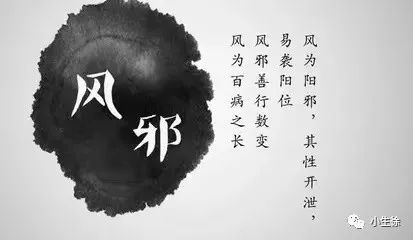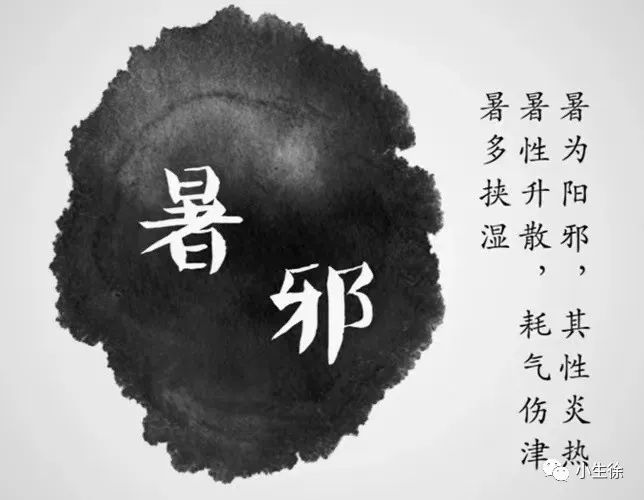
(1)Wind Pathogen: ① Wind is a Yang pathogen, light and dispersive, easily attacking Yang positions.
② Wind is characterized by its ability to move and change frequently.
③ Wind is active (the pathogenic nature of wind is characterized by instability).
④ Wind is the leader of all diseases.
(2)Cold Pathogen: ① Cold is a Yin pathogen, easily injuring Yang Qi.
② Cold is characterized by stagnation and is primarily associated with pain.
③ Cold has a constricting nature.
(3)Heat Pathogen: ① Heat is a Yang pathogen, characterized by its fiery nature.
② Heat can disturb the mind and spirit, injuring fluids and depleting Qi.
③ Heat often accompanies Dampness.
(4)Dampness Pathogen: ① Dampness is a Yin pathogen, easily injuring Yang Qi and obstructing the flow of Qi.
② Dampness is heavy and turbid.
③ Dampness is sticky and viscous.
④ Dampness tends to descend, easily attacking Yin positions.
(5)Dryness Pathogen: ① Dryness is characterized by its dryness and can easily injure body fluids.
② Dryness can injure the lungs.
(6)Fire (Heat) Pathogen: ① Fire is a Yang pathogen, characterized by its upward and fiery nature.
② Fire can disturb the mind and spirit.
③ Fire can injure fluids and deplete Qi.
④ Fire can easily generate Wind and move Blood.
⑤ Fire pathogens can lead to sores and abscesses.
The nature and pathogenic characteristics of the Six Excesses (Wind, Cold, Heat, Dampness, Dryness, Fire).
(1) Wind Pathogen:

Wind has the characteristics of being active and mobile. Although Wind is the primary Qi of spring, it can occur in all seasons, with diseases caused by Wind often occurring in spring but also possible in other seasons.
① Wind is a Yang pathogen, light and dispersive, easily attacking Yang positions.
Wind’s dispersive nature means it can easily invade the skin, leading to symptoms such as sweating and aversion to wind.
Wind is a Yang pathogen, characterized by its lightness and upward dispersal, which can easily attack the upper body, skin, Yang meridians, and the lower back.
When Wind invades the meridians, it can cause dizziness, headaches, neck stiffness, facial paralysis, and crooked mouth.
When Wind invades the skin, symptoms may include aversion to wind, fever, and sweating.
When Wind invades the lungs, symptoms may include nasal congestion, runny nose, throat itching, and cough.
When Wind invades the Yang meridians and lower back, symptoms may include lower back pain and numbness.
② Wind is characterized by its ability to move and change frequently.
Its ability to move is akin to the natural wind, which is unpredictable and unstable. In the human body, Wind’s pathogenic nature is characterized by its ability to shift and change locations.
Wind’s rapid movement means it can come and go quickly, with symptoms appearing suddenly and changing rapidly.
③ Wind is active.
Wind’s active nature is reflected in clinical symptoms such as dizziness, tremors, and convulsions.
When Wind is mild, it may cause slight tremors; when more severe, it can lead to full-body tremors, as seen in conditions like Parkinson’s disease; and in extreme cases, it can lead to seizures or strokes.
④ Wind is the leader of all diseases.
This means that Wind is a primary external pathogenic factor, often accompanied by other pathogens such as Cold, Dampness, Dryness, and Heat.
Wind’s ability to invade the body is extensive, making it a common cause of disease.
Thus, Wind is referred to as the leader of all diseases and the foremost among the Six Excesses.
(2) Cold Pathogen:

Cold has the characteristics of coldness and condensation, being the primary Qi of winter. Cold diseases often occur in winter but can also appear in other seasons, especially when temperatures drop suddenly.
① Cold is a Yin pathogen, easily injuring Yang Qi.
Cold’s nature is cold and clear, making it a Yin pathogen. Under normal circumstances, Yang is responsible for warmth and can control Yin, but when Yin is excessive, Yang Qi is unable to dispel Cold, leading to Yang deficiency.
This results in two main pathological patterns: pure Cold syndrome and mixed Cold with Yang deficiency syndrome.
② Cold is characterized by stagnation and is primarily associated with pain.
Stagnation refers to the obstruction of Qi and blood flow, which is necessary for normal bodily functions. Cold can invade the body, injuring Yang Qi and leading to stagnation.
Cold-induced pain is often sharp and worsens with exposure to cold, while warmth alleviates it.
Symptoms vary depending on the area affected, such as joint pain or abdominal pain.
③ Cold has a constricting nature.
Cold can cause Qi to contract, leading to symptoms such as chills, fever, and lack of sweating.
Cold can also cause joint stiffness and pain due to Qi stagnation.
(3) Dampness Pathogen:

Dampness is characterized by heaviness, stickiness, and a tendency to descend, being the primary Qi of summer. Damp diseases often occur in late summer, but can also appear in other seasons.
① Dampness is a Yin pathogen, easily obstructing Qi and injuring Yang Qi.
Dampness can stagnate in the organs and meridians, leading to symptoms such as chest fullness, poor appetite, and joint swelling.
② Dampness is heavy and turbid.
Dampness can lead to a feeling of heaviness in the body, as well as symptoms like thick tongue coating and muddy urine.
③ Dampness is sticky and viscous.
Dampness can cause symptoms such as sticky stools and difficulty urinating.
④ Dampness tends to descend, easily attacking Yin positions.
Dampness often affects the lower body, leading to symptoms such as diarrhea and edema.
In summary, Dampness is characterized by Qi obstruction, heaviness, and a tendency to affect the spleen and lower body.
(4) Dryness Pathogen:

Dryness is characterized by its drying and astringent nature, being the primary Qi of autumn. Dryness can lead to a series of symptoms known as Dryness Disease.
① Dryness is characterized by its ability to injure body fluids.
Dryness can lead to symptoms such as dry skin, dry throat, and dry cough.
② Dryness can easily injure the lungs.
The lungs are sensitive to dryness, and Dryness can lead to symptoms such as dry cough and difficulty breathing.
In summary, Dryness primarily affects the lungs and is characterized by symptoms of dryness and fluid depletion.
(5) Heat (Fire) Pathogen:

Fire is the source of heat, and heat is a characteristic of fire. Heat is often associated with summer but does not have a clear seasonal limitation.
① Heat is a Yang pathogen, easily injuring fluids and depleting Qi.
Heat can lead to symptoms such as high fever, irritability, and thirst.
② Heat (Fire) tends to rise.
Heat can lead to symptoms such as headaches and throat inflammation.
③ Heat (Fire) can easily generate Wind and move Blood.
Heat can lead to symptoms such as convulsions and bleeding.
④ Heat (Fire) can easily cause sores and abscesses.
Heat can lead to symptoms such as redness, swelling, and pain.
In summary, Heat primarily manifests as Yang heat symptoms, often affecting the upper body and characterized by rapid onset and transmission.
(6) Summer Heat Pathogen:

Summer Heat is a fire heat pathogen, primarily occurring in summer.
Unlike other pathogens, Summer Heat has a clear seasonal characteristic, primarily occurring between the summer solstice and the beginning of autumn.
① Summer Heat is a Yang pathogen, characterized by its fiery nature.
Summer Heat can lead to symptoms such as high fever, irritability, and thirst.
② Summer Heat tends to rise and disperse, easily injuring fluids and depleting Qi.
Summer Heat can lead to symptoms such as excessive sweating and thirst.
③ Summer Heat often accompanies Dampness.
Summer Heat can lead to symptoms such as fatigue and digestive issues.
In summary, Summer Heat can lead to symptoms of heat excess, Yin deficiency, and Qi depletion, often accompanied by Dampness.

